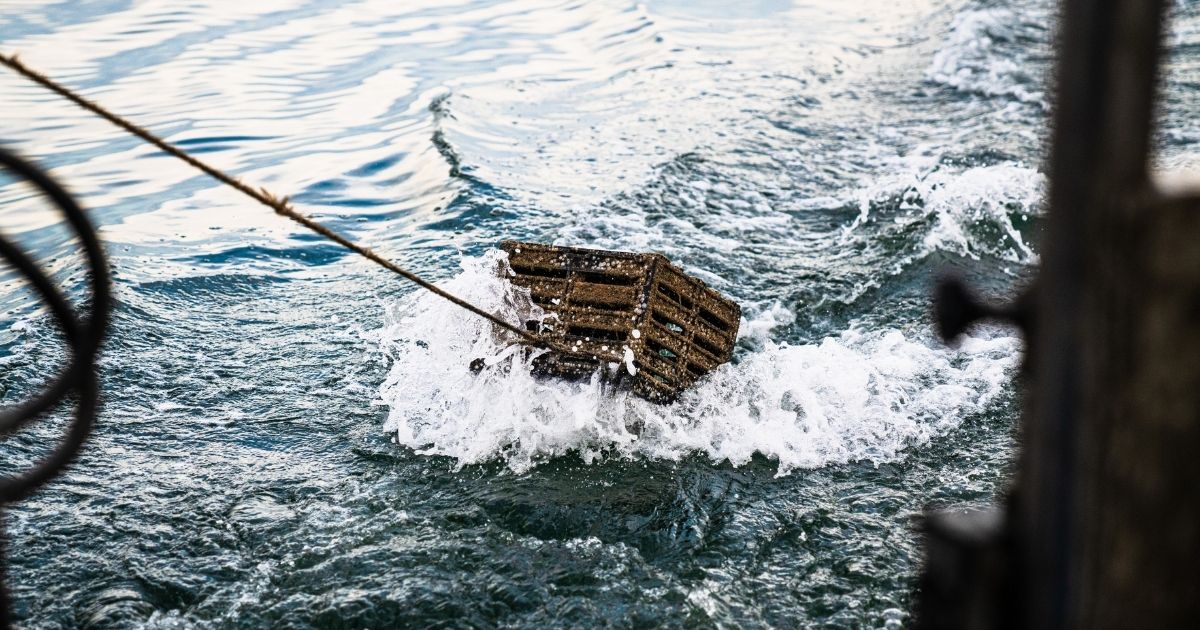Hailed for its flavor, the Florida stone crab captures the Clearwater community, dominating the local fishing industry and the city’s menus each stone crab season.
The smell of morning for a Florida stone crabber is not that of brewing coffee, but rather plumes of exhaust from a fleet of ships in the Clearwater Beach Marina.
That’s where a crew of three mid-twenty-somethings—Malone Jenkins, Joel Johnson, and Dalton Dekilder—meet at 5:30 am to load bait and check the boat before one of them, without a word, plants a foot on the bow, the other on the dock, and pushes off toward open water.
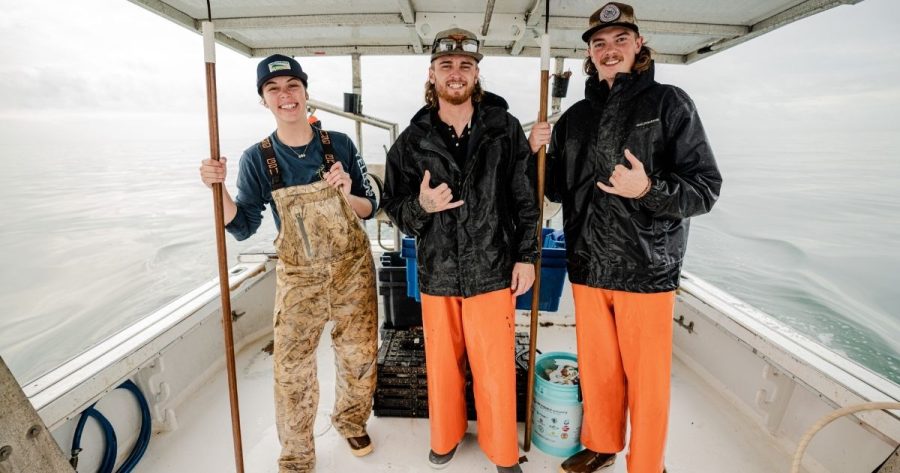
For a limited season each year, the stone crab seizes this part of Florida, where a slew of boats and industrial fishers converge to bring a steady supply of sweet, muscular meat to shore.
As if preparing for a holiday, the Clearwater community is flooded with crabbers who hit town for the season, ornamenting the coastline with traps, while restaurateurs stand at the ready to present fresh-cracked claws to clamoring diners. The months-long stone crab season is full of long days, high prices—and a frenzy both at sea and on land.
A Day’s Work During Stone Crab Season
A stone crabs’ life is one of predation—at least until they become the hunted, at which point their powerful claws are pulled off, boiled to a copper sunset hue, and typically fanned atop crushed ice.
Once trapped, the crustaceans sit some twenty-five to sixty-five feet down on the ocean floor until they are pulled from the sediment by seasonal stone crabbers like the trio aboard the Seaweed—an unassuming boat named for the owner’s old habits during his fishing days.
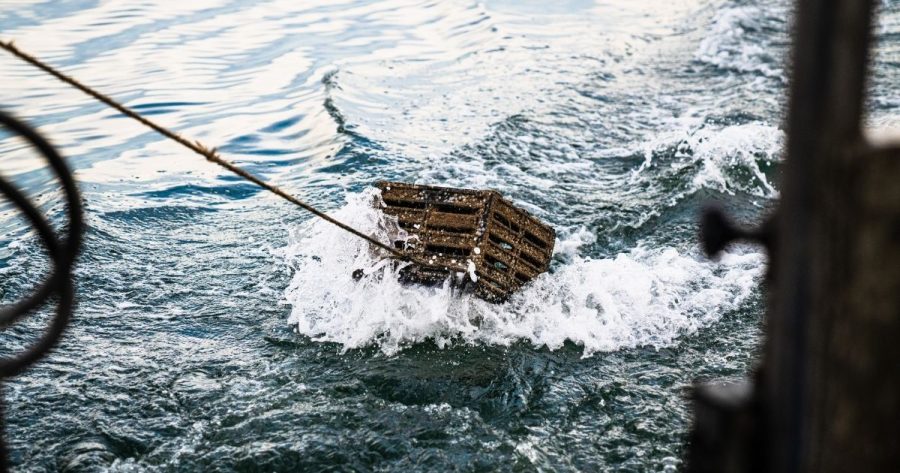
Jenkins, Johnson, and Dekilder met in Alaska where they spend the summers fishing for salmon; stone crabbing in Florida serves as their escape from the bitter winters of the last frontier.
Johnson leaves his house at 4:30 each weekday morning making his way to the Clearwater Beach Marina. There, the team loads frozen bait of scraps from meat and fish processors around the region.
They head out through the Clearwater Pass with Captain Mark Mahan at the helm. Mahan, who “gets into trouble on land chasing too many women,” says divorce drove him out to sea.
Aside from the captain’s chair, there is nowhere to sit on the boat, only space to move and haul. The ride out is full of spirited comraderie and teasing before the harvest begins. Jenkins notes that “the work is repetitive and you’re doing the same thing over and over, so you kind of just shut off your brain.”
She’s only been pinched once by a stone crab, whose claws have up to 19,000 pounds of pressure per square-inch—four times that of a crocodile.
“I was swinging it around doing whatever I could to get it off,” she says, reenacting the arm movements she made when banging the crab’s body on the side of the boat. “It felt like having my hand closed in a car door.”
When Stone Crab Season Starts
Stone crab season officially starts on October 15, but commercial stone crabbers are allowed to put their traps in ten days prior to that. When asked if his crew takes advantage of the head start, Frank Chivas—owner of the Seaweed, the distribution business Direct Seafoods, and founder of Baystar Restaurant Group—responds with a quick “hell yeah.”
When the crew’s 3,000-plus traps are set out, they are positioned in lines that run 100 to 300 traps long, set fifty to seventy-five feet apart, and marked with a GPS system that sits on top of the boat’s console in clear view of Mahan.
About half an hour from departure, the captain aligns the boat with a span of traps and the crabbers prepare to harvest the lines.
The captain keeps the vessel running steady between two lines as two crabbers stand in the boat’s back corners, armed with gaffs that they use to hook the buoy that runs to the seafloor. The rope, disguised with a season’s worth of aquatic vegetation and barnacles, is then affixed to the hydraulic hauler and dislodged from the deep muck that is home to the captive stone crab.
Chivas was born into the fishing industry. “I remember back when we pulled up the traps by hand,” he says, as the hauler does minutes of work in seconds. “It didn’t go this fast.”
The crabbers empty the traps into a central bin between them, which sits atop a makeshift table of old traps and upside-down bins. It is at this stage that one of them uses a 2⅞ inch caliper to measure each crab’s pincher from joint to tip to make sure the stone crab claw can be legally harvested.
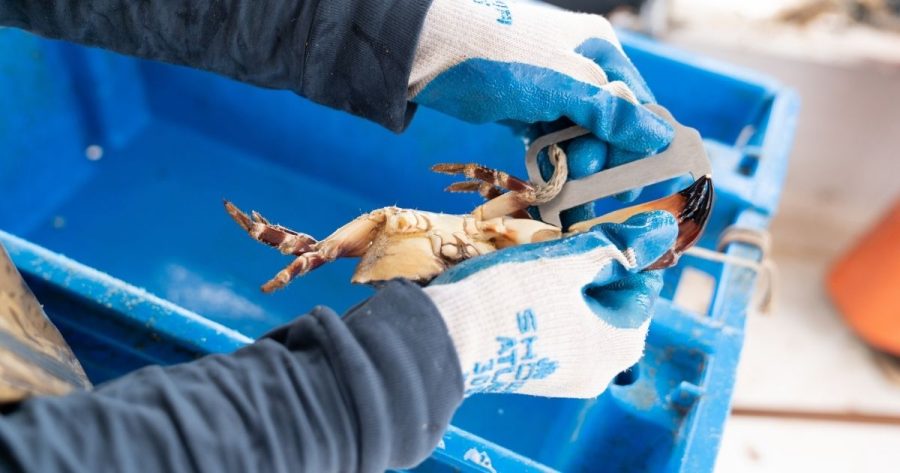
Within seconds, the selection is made, and the claw is either snapped off or left to grow, after which the crab is thrown back into the water to start the long process of regeneration.
Despite its immense force and capability, a stone crab’s claw nearly slides from its joint—an evolutionary defense mechanism meant to aid in the escape from predators. Malone’s fingers act as nimbly as possible beneath thick gloves to snap the claw, leaving the joint intact to ensure regrowth. If the break is made above the joint, the crab will bleed to death.
Pulling, checking, emptying, baiting, and returning the trap to the water takes less than thirty seconds. It is the stone crabbers’ goal to have the crabs out of the water for the shortest amount of time possible and if all goes as planned, the boat will never stop moving.
Although this time Malone is tasked with snapping the claws off and Johnson and Dekilder man the hydraulic hauler, they often switch jobs so that no one person is doing the same thing for too long.
“The hardest part,” Jenkins notes, “is trying not to miss a buoy. Because you don’t want to miss a trap, have to turn around, or leave it down there for weeks at a time full of crab or without being baited.”
Plus, Johnson chimes in, “there’s a wooden eat-out board that deteriorates over time if the trap is lost or forgotten,” which allows the trapped stone crabs a chance at survival.
Stone Crab Paying the Price
The Florida Fish and Wildlife Conservation Commission (FWC) recommends that crabbers leave one claw on the crab even if they both measure longer than 2⅞ inch—with one claw left to gather food, the crab’s survival rate increases and their claw regeneration time decreases.
But with the market price ranging from $28.95 per pound for medium stone crab claws weighing up to three ounces and $89.99 per pound for colossal stone crabs claws weighing over seven ounces, it is unlikely to find a crabber that takes that suggestion to sea.
The steep price is heightened by a variety of environmental, labor, and regulatory factors. For one, the season itself is short, and made shorter by weather, which shapes the schedule and can inhibit crabbers from going out while also pushing the crabs away depending on the temperature.
The stone crab season once lasted from October 15 to May 15 but was shortened by two weeks in 2020 due to declining harvests, which has forced stone crabbers to hustle for the past two seasons.
In addition to the larger size claw and shorter season, escape rings measuring 23/16 inches in diameter will be required before the 2023-24 season which will enable smaller crabs to get out of the trap. The rising cost of fuel and crew hands, maintenance of traps, and unpredictable weather are all compounded into the claw, setting its price.
The Fish and Wildlife Research Institute is currently conducting a long-term, trap monitoring study to better understand the factors that play into the activity of stone crabs.
The team designates ten locations along the Florida Gulf coast as study sites where they position five crab traps approximately 100 meters apart in a straight line, resulting in twenty traps sampled at each of the locations.
Every two weeks, the traps are harvested and counted and the stone crabs’ sex, injuries, and size are documented to determine whether the claws are original or regenerated.
In a 2011-2012 study, the FWC found that 46 to 82 percent of crabs died from the harvesting of two claws, while 23 to 59 percent died from the loss of one.
In comparison, just 12.8 percent of crabs died when no claws were removed. This makes the job of the stone crabber snapping the claws vitally important to the cyclical system and future of Florida’s stone crab seasons.
Aboard the Seaweed
All is quiet as the Seaweed putts down the lines, intent on harvesting, until the stone crabbers come across a trap that is mudded to the seafloor. It prompts a series of “whoas” from the back, alerting Captain Mahan to slow down so the crew can attempt to dislodge it.
This slows the process, but not for long, and the stone crabbers are back to checking traps and removing the crabs—they also keep an eye out for colorful bits of coral or unique shells found in the traps for their personal collections.
While the center crew member measures and snaps claws and returns crabs to the sea, the other two refill the newly emptied traps with the now thawed and pungent bait before tossing them back into the water where they will sit for roughly two weeks until they’re checked again.
In a day, the Seaweed crew checks between 300 and 500 traps of the more than 3,000 that are out during the season, each containing around seven crabs to be evaluated for size. A line can run anywhere from ¼-mile to 1 mile long and take between forty-five minutes and an hour to harvest.
Naturally, the end of a line is met with a break supplemented by cigarettes and Red Bull or pulls from a cotton candy flavored e-cigarette, a scent that contends with the rotting bin of offal only a few feet away.
The day runs on a loop: Mahan aligning; Joel, Malone, and Dalton rotating between retrieving, hauling, emptying, baiting, and snapping, all the while playfully bantering and telling stories to pass the time between lines.
This goes on until two or three o’clock when the boat is emptied, rinsed, and the stone crabbers prepare to transfer the claws to the markets and restaurants, where eager diners await.
Part of the Stone Crab Process
Storied Florida icon Frenchy’s also holds a stake in the local stone crabbing industry. Although the portfolio of restaurants is best known for Frenchy’s Original Café in Clearwater Beach, the stone crab magic happens less than ten miles away at Frenchy’s Stone Crab & Seafood Market in Dunedin.
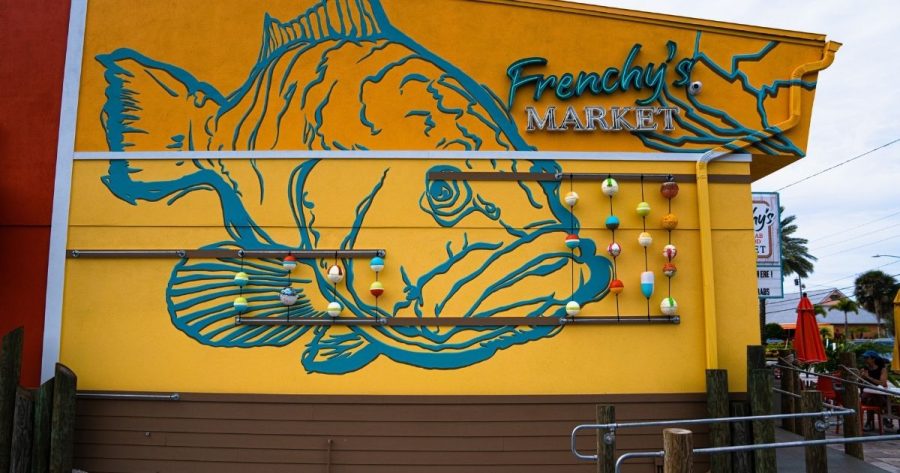
Tommy Shook started fishing for Frenchy’s in 1981, the year it opened.
“I’ve always been a fisherman and I couldn’t believe I got paid to go fishing,” he says. “I’d come home from fishing for days and the first thing I would do was go fishing. My wife always thought I was nuts, but I was living the dream.”
Shook still fishes, but only for leisure. Today, at 58, he is the general manager of Frenchy’s Stone Crab Company and spends his days cooking, weighing, and sorting stone crab claws to sell in the market or to ship across the country.
Upon delivery each late afternoon, the crab claws are referred to as “green crab” because of their color and because they are still raw. The claws are hard boiled for five minutes before being submerged in a slush tank filled with ice to shock the meat from the shell.
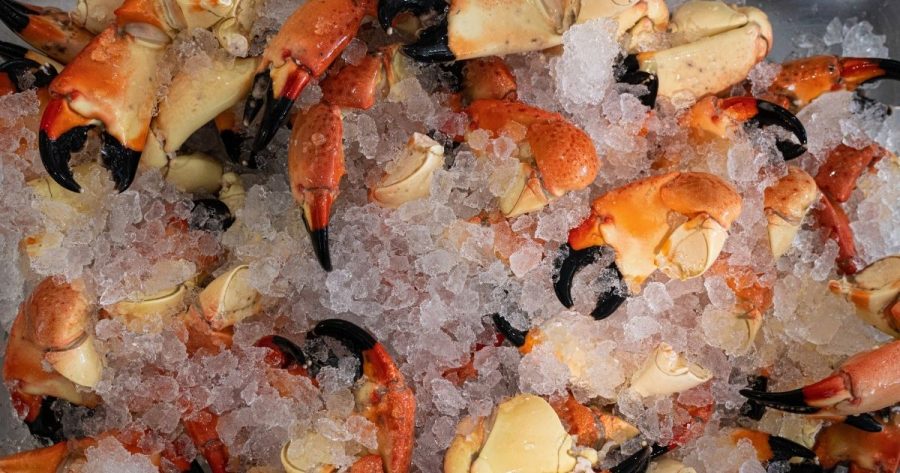
They are then transferred to a sunken sorting table flooded with water, weighed, and dropped through openings into corresponding bins depending on their classification: medium (1 to 3 ounces), large (3 to 5 ounces), jumbo (5 to 7 ounces), or colossal (7 ounces and up).
If a stone crab recently molted before harvest and its claw has yet to fill with meat, the claw will float on the table, be weighed, and sold for less. A scale sits nearby, but after 39 years, the weights and sizes have become muscle memory for Shook.
The stone crab claws sold in the market are arranged the next morning in kaleidoscopic symmetry by size, where they sit until locals or visitors get wind of the fresh catch.
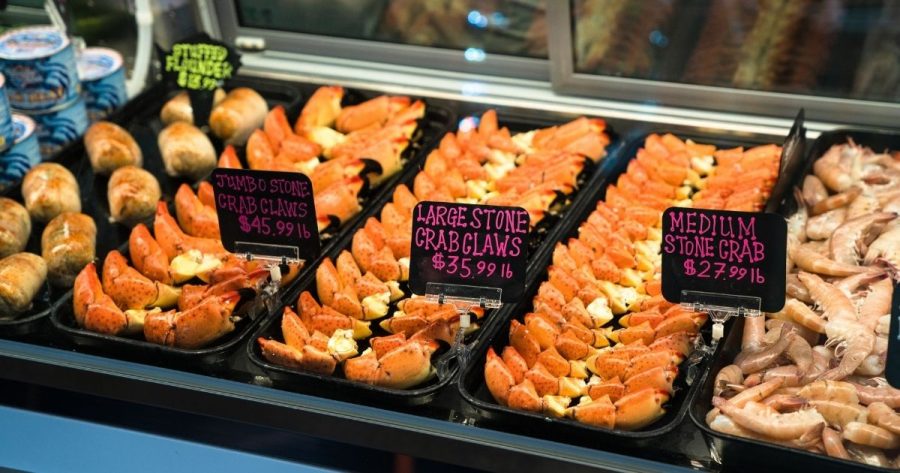
“This year they’re more expensive than I’ve ever seen them,” says Shook, “and no one’s really happy about that. But at the same time, to justify it, fuel has doubled in ten months, the bait has doubled in ten months, and everything just costs so much more to go out and catch. So, it makes it kind of tough.”
Still, the claws sell far and wide.
Restaurants—local and national—place orders daily depending on demand in their individual markets. Shook signs off on high-dollar packages of claws destined for New York, Boston, Las Vegas, and Chicago.
Seeing as 98 percent of US stone crab claws come from Florida, the Clearwater area and Frenchy’s Market receive national attention for their supply each year as stone crab fever spreads.
Get Crackin’ on Stone Crab Season
The common denominator of the Clearwater restaurant and fishing industry from October to May is stone crab.
All are linked together in an ecosystem affected by weather, labor, chefs, and legislation. To get to the stainless-steel crackers and white tablecloths, it takes a chain of people, procedures, and grit.
Everyone has a different method for getting stone crab claws on their menus. The team behind Frenchy’s subcontracts between eight and ten boats and fishing crews while Chivas uses boats that are owned by Direct Seafoods while also subcontracting additional boats during the season. Each method has the same delicate result: sweet, chilled stone crab claws.
The scramble and excitement for stone crab claws is as hectic on land as it is on the boats as restaurateurs and diners anxiously await their availability each year. The claws are traditionally served cracked over crushed ice with greens and a lemon wedge.
Flair and originality come by way of the mustard sauce with which the claws are served. Some are heavier on the cream; others lean toward Worcestershire. However, the claws hold their own—the sweet flavor needs little by way of seasoning. After all, they’ve been brining for years.
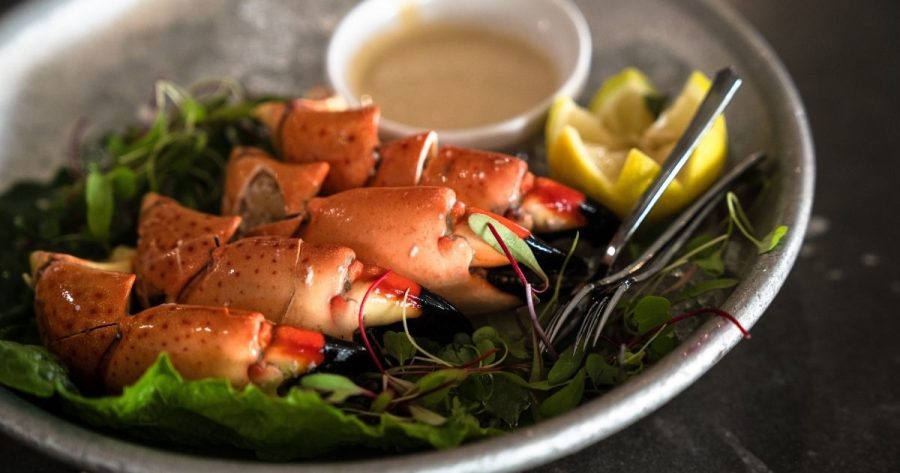
Stone crabs are probably some of the only things that have been in Clearwater Beach longer than Bob Heilman’s Beachcomber Restaurant.
The institution celebrated its seventy-fourth anniversary in November from the same location it celebrated its grand opening in 1948. With an emphasis on sourcing local, the menu changes every day depending on what’s available through seafood markets and dealers.
Sheri Heilman sources stone crab claws from all over, including from Chivas’ Direct Seafoods. Although known for their Back-to-the-Farm fried chicken and extensive wine collection of more than 20,000 bottles, Bob Heilman’s rolls out the red carpet for stone crab season, only serving colossal claws when the market allows.
Just as the stone crab season comes and goes, so does their presence at restaurants in the area. The two-word, eye-catching cue, whether on a menu or a specials chalkboard, garners envious, salivating reactions.
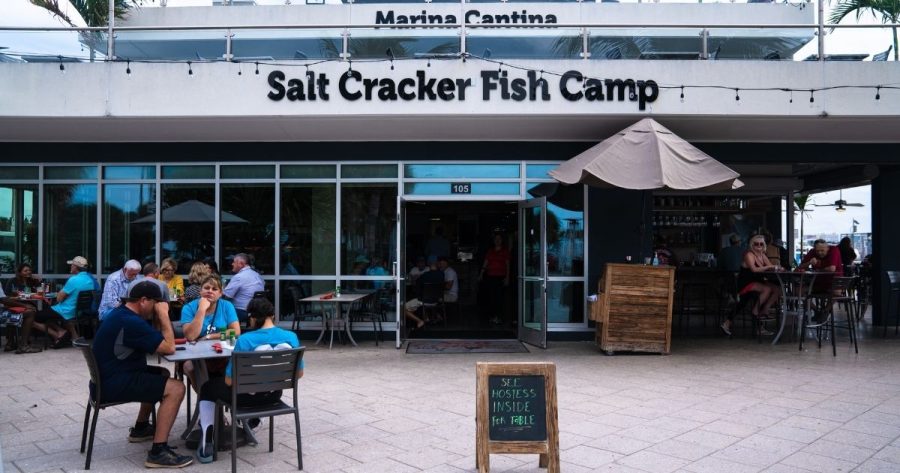
Although typically served chilled, the crab meat at Chivas’ Salt Cracker Fish Camp also sits atop a skillet mac and cheese and it’s incorporated into their perfectly browned fried rice. Patrons can get a front-row seat at the bar to see back-of-house staff member Maria Baxcajay effortlessly cracking the claws and splaying them over ice.
Come May, in the same way the stone crab migrates with the cycle of the sea, Johnson, Jenkins, and Dekilder will escape the state’s sweltering summer temperatures and impending hurricane season by resorting back west to fish squid in California or salmon in Alaska.
Chivas, Heilman, and Shook will continue to helm their respective establishments by featuring other illustrious seafoods like red snapper and grouper. And the stone crab will molt and regenerate, battling for food and growing its claws to a prized size for its inevitable return to the trap.
share
trending content
-
How To Pull off the Perfect Prime Rib With Chef Erik Niel
by Erin Byers Murray -
How To Make Eggplant Parmesan with Charleston’s Costa
by Emily Havener -
Get To Know Savannah, Georgia
by Tate Jacaruso -
Main Street Revival
by TLP Editors -
What You Loved Cooking in 2025
More From Key Ingredient
-
Sweet Talk: The Sensuous Power of Local Honey
-
Caramel Delights
-
Jason Stanhope’s Famous Celery Salad
-
Little Bursts of Summertime
-
A Better Butter Bean








